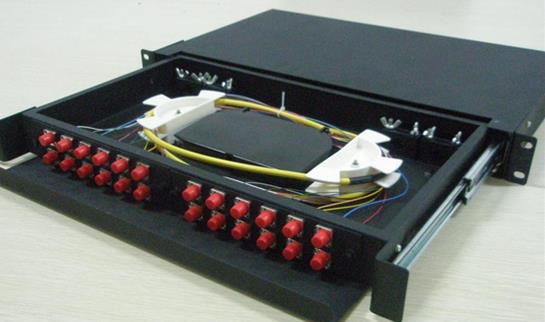-

- Sopto Home
-

- Special Topic
-

- Fiber Optics knowledge
-

- What is a Fiber Optic Patch Panel?
Fiber Optics knowledge
- Maintained Methods of Fusion Splicer Parts
- How to Use the Fiber Optic Cleaver?
- What are Fixed Attenuators & Variable Attenuators?
- Deployable Fiber Optic Systems for Harsh Mining Environments
- Developing Miniature Fiber Optic Cable Has Become the Trend
- Fiber Optic Cleaning Procedures
- 6 Steps to Selecting a Fiber Optic Cable
- Signal Attenuation Introduction
- How Fiber Transmission Works?
SOPTO Special Topic
Certificate



Guarantee
Except products belongs to Bargain Shop section, all products are warranted by SOPTO only to purchasers for resale or for use in business or original equipment manufacturer, against defects in workmanship or materials under normal use (consumables, normal tear and wear excluded) for one year after date of purchase from SOPTO, unless otherwise stated...
Return Policies
Defective products will be accepted for exchange, at our discretion, within 14 days from receipt. Buyer might be requested to return the defective products to SOPTO for verification or authorized service location, as SOPTO designated, shipping costs prepaid. .....
Applications
Fiber Optis can be used in so many fields:
Data Storage Equipment
Interconnects,Networking
Gigabit Ethernet
FTTx, HDTV,CATV
Aerospace & Avionics
Data Transfer Tests
Network Equipment
Broadcast Automotive
Electronics,Sensing
Oil & Gas, Imaging
Outside Plant,Central Office
Harsh Environment
Data Transmission
Illumination,Institutions
Ship to Shore,Education
Simulation,Military,Space
Unmanned Aerial Vehicles
Semiconductor Equipment
Diagnostics & Troubleshooting
Premise Networks Carrier Networks
Independent Telecommunication Providers
SOPTO Products
- Fiber Optic Transceiver Module
- High Speed Cable
- Fiber Optical Cable
- Fiber Optical Patch Cords
- Splitter CWDM DWDM
- PON Solution
- FTTH Box ODF Closure
- PCI-E Network Card
- Network Cables
- Fiber Optical Adapter
- Fiber Optical Attenuator
- Fiber Media Converter
- PDH Multiplexers
- Protocol Converter
- Digital Video Multiplexer
- Fiber Optical Tools
- Compatible
Performance Feature
Fiber Optics knowledge
Recommended


What is a Fiber Optic Patch Panel?
A fiber-optic patch panel is used to separate out the fibers within a fiber-optic cable. By using one of these panels, the fibers can be spliced to individual fibers on other cables, allowing the cables to be crossed and connected in a variety of ways. In addition, the panel creates a safe environment in which to work with exposed fibers.
There are two main types of fiber-optic patch panels. One is a wall-mounted device, which, in its most basic form, can keep 12 different fibers separate from one another. If the fiber-optic cable has more than 12 fibers, the extra fibers can be moved to a second panel or an engineer can use a panel that is designed to hold more fibers separately. Wall-mounted panels can be constructed to hold up to 144 fibers at once.
The other type of fiber-optic patch panel is a rack-mounted panel. This type of panel holds the fibers horizontally and is often designed to open like a drawer. Sliding the panel open gives an optical engineer easy access to the fibers inside.
An optical engineer often uses a fiber-optic patch panel to test the fibers within an optical cable. Problems with a fiber-optic cable can be located within a single fiber when the fibers are split apart and tested separately. The panels make it easy to organize the fibers. Furthermore, working with the fibers within the tray of the fiber-optic patch panel protects the fibers from anything in the environment that could damage them.

Fiber Optic Patch Panel
A fiber-optic cable needs to be split at one end in order gain access to the individual fibers. The separated fibers are fed into different ports, each of which has a fiber-optic adaptor. These adaptors can then be used to plug individual fibers into other devices.
The adaptors on a fiber-optic patch panel can come in a variety of different shapes. In most panels, all of the adapters are of the same type, but if there is more than one type of fiber-optic connector used within the network, it may be necessary to get a panel with hybrid adapters. These types of adapters can be used to connect different types of connectors on fiber-optic cables.
For more high quality and low cost fiber optics and patch panels, please contact SOPTO.
Related Knowledge:
Fiber Optics’ Manufacturing Processing
What is Optical Fiber Composite Low-Voltage Cable?





